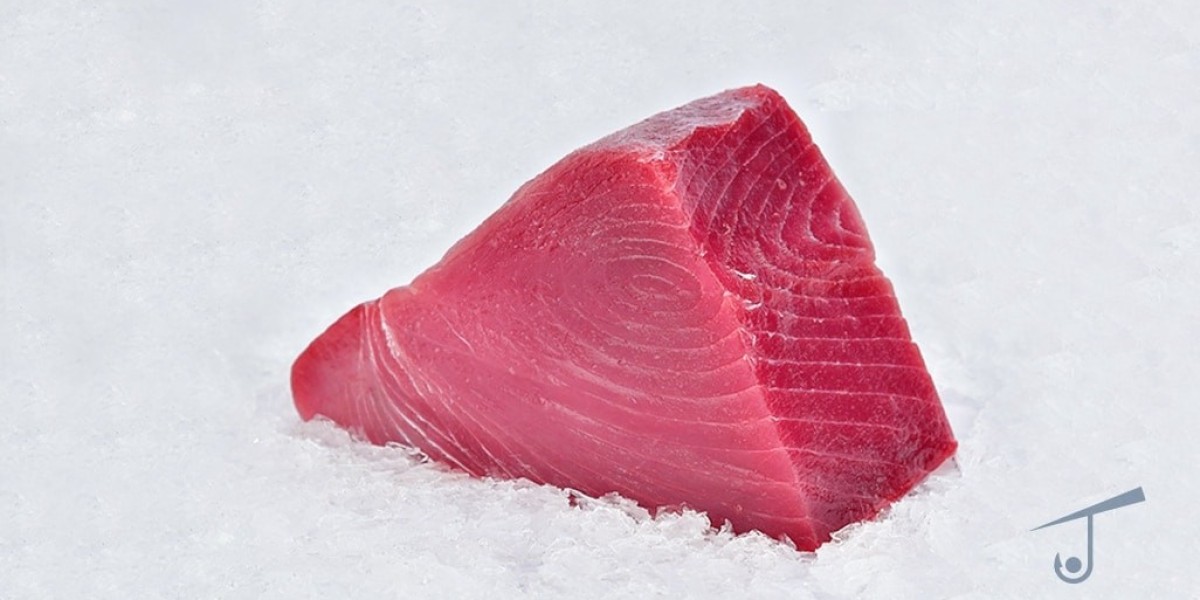Within the vast blue expanse of our oceans lies a diverse world of marine creatures that have captivated human interest since time immemorial. Among these fascinating inhabitants are shellfish, a broad category that includes some of the most sought-after delicacies worldwide. From the succulent meat of lobsters to the delicate flavours of oysters, shellfish represent a significant portion of the global seafood industry, keeping seafood processing companies busy year-round. But what exactly constitutes a shellfish? How do crustaceans differ from mollusks? Let's dive deeper into the ocean of knowledge to understand these marine invertebrates better.
Understanding Shellfish: The Umbrella Term
The term "shellfish" might seem straightforward, but it encompasses a remarkably diverse group of aquatic invertebrates united primarily by the presence of some form of exoskeleton or shell. This broad classification includes two major groups: crustaceans and mollusks. Despite sharing this common feature, these groups are fundamentally different in their biology, appearance, and evolutionary history.
Shellfish are not fish at all, despite what their name suggests. While fish are vertebrates with backbones, shellfish lack this defining characteristic. Instead, they have evolved different protective mechanisms and body structures that have allowed them to thrive in aquatic environments for hundreds of millions of years.
The global demand for shellfish continues to grow, with specialised fish processing companies developing increasingly sophisticated methods to bring these delicacies from ocean to table while maintaining their unique flavours and nutritional profiles. Understanding the distinctions between different types of shellfish is not just academic—it informs harvesting practices, culinary applications, and even medical considerations like allergies.
Crustaceans: The Armoured Arthropods
Crustaceans represent one of the two major groups under the shellfish umbrella. These arthropods—relatives of insects, spiders, and centipedes—are characterised by their segmented bodies, jointed appendages, and hard exoskeletons made primarily of chitin, a tough polysaccharide, often reinforced with calcium carbonate.
Distinctive Features of Crustaceans:
The crustacean body typically consists of three main sections: the head, thorax, and abdomen. In many species, like crabs and lobsters, the head and thorax are fused into what's called a cephalothorax. Their exoskeleton serves as armour but presents a challenge for growth, necessitating periodic moulting where they shed their old shell and form a new, larger one—a vulnerable period during which they seek hiding places to avoid predation.
Most crustaceans have two pairs of antennae, which serve as sensory organs for detecting food, predators, and potential mates. Their complex eyes, often on stalks, provide them with excellent vision. Additionally, they possess specialised appendages for various functions—from the powerful claws of lobsters to the paddle-like swimming legs of crabs.
Prominent Crustacean Examples:
· Lobsters: These large, marine crustaceans are prized for their tail meat and claws. Their distinctive appearance, with a segmented body and powerful front claws, makes them instantly recognisable. Maine lobster from North America and Spiny lobster from warmer waters represent two different families with slightly different characteristics.
· Crabs: With their typically wide, flat bodies and distinctive sideways movement, crabs represent one of the most diverse crustacean groups. From the massive Alaskan king crab to the tiny pea crab that lives as a symbiont inside oysters, the variety is astounding.
· Shrimp and Prawns: These swimming crustaceans feature compressed bodies and long antennae. While the terms "shrimp" and "prawn" are often used interchangeably in culinary contexts, they do represent different subgroups taxonomically. Both are highly valued in cuisines worldwide and are among the most commonly consumed shellfish globally.
· Krill: Though small, these crustaceans are ecologically crucial as a food source for many marine animals, including whales. They form massive swarms in cold ocean waters, particularly around Antarctica and in the North Pacific.
Ecological and Economic Significance:
Crustaceans play vital roles in marine ecosystems as both predators and prey. They serve as essential links in food chains, helping to maintain ecological balance. Many species act as scavengers, consuming dead organic matter and helping to recycle nutrients within their habitats.
Economically, crustaceans represent some of the most valuable seafood products worldwide. The lobster industry alone generates billions of dollars annually, while shrimp farming has become one of the fastest-growing aquaculture sectors globally. The best exotic fish exporters often include premium crustacean offerings in their product lines, recognising their appeal to discerning consumers worldwide.
Mollusks: The Soft-Bodied Invertebrates
Mollusks form the second major group within the shellfish category. These soft-bodied invertebrates represent one of the most diverse animal phyla on Earth, with over 85,000 recognised species. Unlike crustaceans, which belong to the arthropod phylum, mollusks constitute their own distinct phylum Mollusca.
Key Characteristics of Mollusks:
Most mollusks possess a specialised tissue layer called the mantle, which secretes their shell when present. Unlike crustaceans' exoskeletons, mollusk shells grow continuously throughout the animal's life and do not require moulting. Another distinctive feature is the radula—a specialised feeding structure found in many mollusks that functions like a tongue equipped with rows of tiny teeth for scraping or cutting food.
The mollusk body typically includes a muscular foot used for movement, though this structure has evolved dramatically different forms across various mollusk groups. Their nervous systems range from simple nerve networks to complex brains with well-developed sensory organs.
Major Mollusk Groups:
Mollusks encompass several distinct classes, including three that are particularly relevant to our discussion of shellfish:
· Bivalves: These mollusks, including oysters, clams, mussels, and scallops, possess two hinged shells connected by powerful adductor muscles. They are typically filter feeders, drawing water through their gills to extract oxygen and food particles. The dramatic differences in shell shapes between species reflect adaptations to different habitats and lifestyles.
· Gastropods: This largest class of mollusks includes snails and slugs, with marine examples like whelks, conchs, and abalones often considered shellfish. Most gastropods have a single shell (though some have lost their shells through evolution) and move via a broad muscular foot. Many sea snails are harvested for food, with some, like abalone, commanding premium prices.
· Cephalopods: Though not typically classified as shellfish in culinary contexts, cephalopods like squid, octopus, and cuttlefish are mollusks with highly reduced, modified, or absent shells. They are characterised by their well-developed brains, complex eyes similar to those of vertebrates, and tentacles equipped with suction cups. Despite not fitting the traditional shellfish category, they are included here for completeness in discussing mollusks.
Culinary and Commercial Importance:
Mollusks have been harvested for food since prehistoric times, with evidence of oyster consumption dating back thousands of years. Today, they remain crucial seafood items globally. Oyster farming represents one of the most sustainable aquaculture practices, with minimal environmental impact and potential benefits for coastal ecosystems.
The commercial significance of mollusks extends beyond food. Pearls—produced by certain oysters and mussels as a defence mechanism against irritants—form the basis of a valuable jewellery industry. Traditional societies have used mollusk shells for tools, currency, and decorative items throughout history.
Fresh tuna suppliers often diversify their offerings with premium mollusk products, recognising that consumers interested in high-quality seafood frequently seek variety in their choices. The complementary flavours of fin fish and selected mollusks make them natural companions on restaurant menus and in home cooking.
Comparing Crustaceans and Mollusks
Understanding the differences between crustaceans and mollusks helps clarify why these groups, despite both being shellfish, offer such varied culinary experiences and require different handling and preparation methods.
1. Structural Differences
The most fundamental difference lies in their body structure and protection mechanisms. Crustaceans wear their hard exoskeleton like armour, with jointed appendages allowing precise movement. Their bodies follow the arthropod pattern of segmentation, with specialised limbs for different functions.
Mollusks, by contrast, typically protect their soft bodies with shells secreted by their mantle tissue. Unlike the all-encompassing exoskeleton of crustaceans, mollusk shells may cover only portions of their bodies, as in chitons, or be completely internalised, as in squid. Their body organisation follows the mollusk pattern, with features like the mantle cavity and often a muscular foot.
2. Evolutionary Divergence
Crustaceans and mollusks represent separate evolutionary lineages that diverged hundreds of millions of years ago. Crustaceans evolved within the arthropod phylum, which also gave rise to insects and arachnids. Their closest living relatives outside water are creatures like centipedes and millipedes.
Mollusks developed along a completely different evolutionary path, with some scientists suggesting relationships to annelid worms based on developmental and genetic evidence. This profound evolutionary distance explains why, despite both being called shellfish, these groups differ so dramatically in their biology.
3. Nutritional Profiles
From a nutritional perspective, both groups offer significant benefits while displaying characteristic differences. Crustaceans typically provide high-quality protein with relatively low-fat content, though notable exceptions exist, like the rich hepatopancreas of lobsters (often called "tomalley"). They are excellent sources of vitamin B12, copper, and selenium.
Mollusks, particularly bivalves, often contain higher levels of certain micronutrients. Oysters, for example, are renowned for their zinc content, while mussels provide exceptional amounts of vitamin B12. Mollusks generally contain omega-3 fatty acids, though usually in lower concentrations than fatty fish.
4. Shellfish Allergies: An Important Distinction
Shellfish allergies represent some of the most common and potentially severe food allergies worldwide. Interestingly, the distinction between crustaceans and mollusks becomes medically significant in this context.
Allergic reactions to shellfish are typically triggered by a protein called tropomyosin, which differs between crustaceans and mollusks. Consequently, individuals allergic to crustaceans may sometimes safely consume mollusks and vice versa, though cross-reactivity can occur. This understanding has important implications for allergy management and dietary recommendations.
Medical professionals typically advise caution and specific testing for individuals with known shellfish allergies before attempting to consume different types. The severity of shellfish allergies—which can range from mild discomfort to life-threatening anaphylaxis—underscores the importance of proper identification and labelling in the seafood industry.
5. Sustainability Considerations
The growing demand for shellfish worldwide raises important questions about sustainability. Different harvesting methods and aquaculture practices for crustaceans and mollusks come with varying environmental impacts.
Wild-caught crustaceans like lobster and crab often require trap fishing, which generally has lower environmental impact than trawling methods used for some shrimp fisheries. Shrimp trawling, particularly in tropical regions, can result in significant bycatch and habitat destruction, though improvements in gear design are helping to mitigate these effects.
Mollusk aquaculture, especially bivalve farming, represents one of the most environmentally sustainable forms of animal protein production. Oysters, mussels, and clams filter water as they feed, potentially improving water quality in cultivation areas. They require no additional feeding, as they extract nutrients from their environment, resulting in a low carbon footprint compared to most animal proteins.
6. Culinary Applications: Celebrating Differences
The culinary world celebrates the distinct characteristics of crustaceans and mollusks. Chefs appreciate crustaceans for their firm, sweet meat and versatility in various cooking methods—from the simple boiled lobster to complex curries featuring shrimp. The meaty texture of crab and lobster makes them centrepieces in many luxury dining experiences.
Mollusks offer different pleasures. Oysters, with their briny liquor and subtle flavours reflecting their specific growing waters, are often enjoyed raw to appreciate their full complexity. Clams and mussels bring distinctive characters to stews and pasta dishes, while scallops' natural sweetness and ability to caramelise when properly seared make them favourites among seafood enthusiasts.
The Global Shellfish Market
The market for shellfish continues to grow globally, with traditional consumption centres like Japan, Spain, and the coastal United States being joined by emerging markets with increasing purchasing power. China has become both the world's largest producer and consumer of many shellfish species.
Advancements in transportation and processing have expanded international trade in fresh and frozen shellfish products. Air-freight capabilities allow premium crustaceans to reach markets worldwide within hours of harvest, while improved freezing technologies help maintain quality for mollusks transported over longer distances.
Final Thoughts
The distinction between shellfish, crustaceans, and mollusks represents more than taxonomic trivia—it reflects profound biological diversity with implications for culinary practices, nutrition, allergen management, and sustainability efforts. By understanding these differences, consumers can make more informed choices about their seafood consumption.
As we continue to explore and harvest the bounty of our oceans, this knowledge becomes increasingly valuable. Whether you are selecting ingredients for a seafood feast, managing dietary restrictions, or simply curious about marine life, appreciating the unique characteristics of these remarkable invertebrates enriches our connection to the natural world and the foods we enjoy from it.
The next time you savour the sweet meat of a lobster or the briny flavour of a freshly shucked oyster, you will know you are experiencing the culmination of hundreds of millions of years of distinct evolutionary pathways, each creating its own form of delicious perfection.









